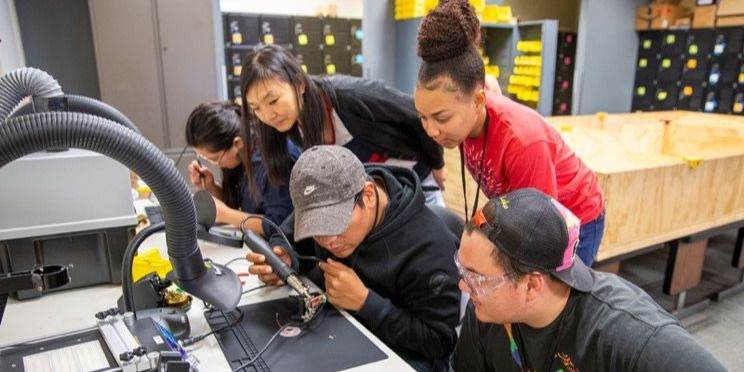AWS Public Sector Blog
Tag: Amazon EC2
Getting started with a healthcare data lake
Data related to healthcare, in both volume and variety, is undergoing a tremendous expansion. One of the best ways to tackle complicated data integration is through a data lake: a centralized, curated, and secured repository that stores all your data, both in its original form and prepared for analysis. A data lake enables you to break down data silos and combine different types of analytics, such as data warehousing, big data processing, or operational analytics, to gain insights and guide better business decisions.
Hot AWS EdStart Startups: Improving student outcomes through personalized learning
AWS EdStart Members are on a mission to bridge the personalized learning gap between students and educational institutions through artificial intelligence (AI)-powered platforms built on Amazon Web Services (AWS). These organizations are enabling students to follow their own learning pathways across writing, math, and reading, at their own pace, anytime, and anywhere. Learn about these three AWS EdStart Members and how they adapt to student learning and virtually assist self-study.
Using the AWS Cloud to restore ecosystems around the world
The world’s forests have decreased by nearly half since the onset of human civilization. Deforestation is continuing at a high rate due to agricultural pressure, poor land management, and climate change, which increases drought, disease, and invasive species. But a new generation of technologies is transforming our ability to manage and grow forests. The unprecedented level of data enables ecology-trained artificial intelligence (AI) to inventory the ecosystem and identify problems like plant condition stress, invasive weeds, species decline, and erosion. Learn how Dendra Systems is using the cloud to restore ecosystems around the world.
Enabling security, interoperability, and discovery in healthcare with the cloud
How can healthcare organizations use Amazon Web Services (AWS) to better serve patients and meet their mission? Learn how government, education, and nonprofit healthcare organizations are using the AWS Cloud to keep patient information secure, achieve interoperability, and speed time to science.
TUM researcher finds new approach to safety-critical systems using parallelized algorithms on AWS
Mahmoud Khaled, a PhD student at TUM and a research assistant at LMU, researches how to improve safety-critical systems that require large amounts of compute power. Using AWS, Khaled’s research project, pFaces, accelerates parallelized algorithms and controls computational complexity to speed the time to science. His project findings introduce a new way to design and deploy verified control software for safety-critical systems, such as autonomous vehicles.
Leveraging the cloud for rapid climate risk assessments
Four Twenty Seven builds tools and services that help bring climate data (sourced from government agencies and academic institutions) to public and private organizations so they can better understand their exposure to climate hazards and manage risk in their communities. Four Twenty Seven’s new on-demand scoring application allows users to enter an asset’s location and receive risk scores for each site in real-time.
Students across Arizona participate in a statewide robotics hackathon
In collaboration with Amazon Web Services (AWS) and NVIDIA, Arizona State University (ASU) hosted its first-ever robotics hackathon. At the Arizona Robo Hackathon, 64 undergraduate and graduate students across seven institutions came together to compete in an Arizona statewide competition hosted on AWS. By the end of the hackathon, students successfully applied their knowledge of computer science, engineering, and programming skills in robotics and artificial intelligence (AI) application development.
Digital Earth Africa: Enabling insights for better decision-making
As part of the Amazon Sustainability Data Initiative, Amazon Web Services (AWS) is supporting Digital Earth Africa (DE Africa). DE Africa is enabling African nations to track changes across the continent in unprecedented detail by making Earth observation (EO) data more easily accessible. This will provide valuable insights for better decision-making around prevention and planning in areas including flooding, droughts, soil and coastal erosion, agriculture, forest-cover, land use and land cover change, water availability and quality, and changes to human settlements.
Structural biologists learning cryo-electron microscopy can access educational resources powered by AWS
Cryo-electron microscopy (cryo-EM) — the technology that won the 2017 Nobel Prize in Chemistry — lets scientists peer into the molecular “machines” at work in our cells in ways that were previously impossible. Using advanced microscopes, cryo-EM captures images of proteins flash-frozen in vitreous ice, revealing their 3D structure in near-native states. Even as access to this technology improves, many researchers are still limited by computing bottlenecks. The cryo-EM field needs to provide more hands-on training in how to process such large datasets. Amazon Web Services (AWS) allows us to provide training, broadening the impact of this important structural biology technology.
Solcast: Solar irradiance forecasting for the solar powered future
Solcast produces real-time, historical and forecast estimates of the available solar radiation resources around the globe. Altogether, this requires processing imagery from five geostationary weather satellites, which take snapshots of the Earth from space every 5-15 minutes. These images can be as fine as 1 kilometer in spatial resolution and are re-captured and transmitted as frequently as every five minutes – a large volume of data. A single third-generation weather satellite in orbit over the United States such as the GOES-16 generates nearly two terabytes (TB) of data each month.









